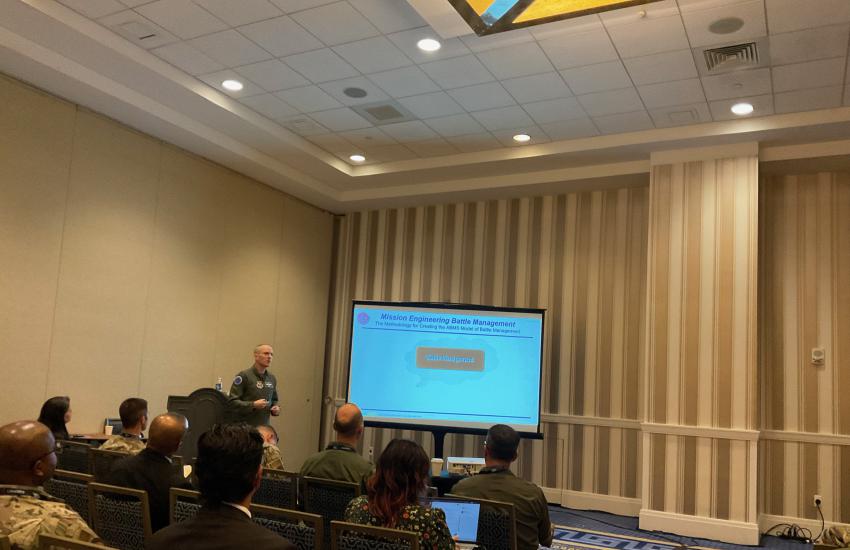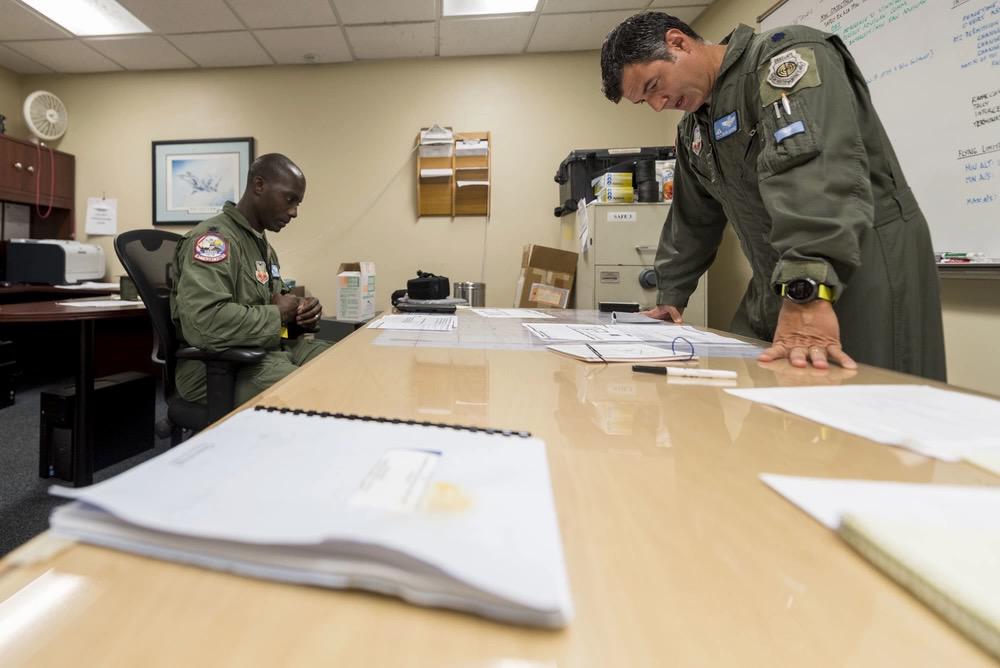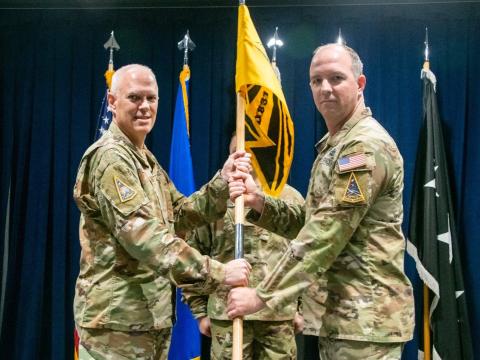Air Force Pursues ABMS Modeling Effort
Following several successful proof of concept or on-ramp events in 2021, the U.S. Air Force is progressing in its development of its Advanced Battle Management System, or ABMS, the sophisticated command and control system for connecting "every shooter to every sensor" across all domains. One of the next important milestones is for the service to finish building out the ABMS digital model of battle management, which is in currently development by the service’s ABMS Cross Functional Team (CFT).
Version 1.0 of the ABMS model-based systems engineering for battle management is planned to be released in the next few months, reported Col. Jonathan “Beep” Zall, speaking to airmen and industry representatives September 20 at the Air and Space Forces Association’s (AFA's) Air, Space and Cyber annual conference.
The platform, which has yet to have a snazzy moniker, was built using a digital engineering environment based on MITRE’s so-called NERVE distributed integration network collaboration tool. Since January, the ABMS CFT has been constructing the systems engineering model, working with the Department of the Air Force’s modeling and simulation experts, according to Col. Zall.
The CFT closely examined how to approach the modeling of ABMS and the specific components of battle management, i.e., the “must-do’s” of battle management. They had to take out what was not actually battle management, such as the ABMS infrastructure that supports it, Col. Zall explained.
The group made deliberate modeling choices to tailor this model to battle management and the activities of its operational environment—although in the future, they might create a model for other areas. They specified an ontology, or naming convention for the ABMS model and identified 13 subfunctions of battle management, such as “parse order and plans, search domain, apply priorities,” amongst others.
“We were trying to be very precise with battle management,” the colonel stated.
In early December, the officials will conduct the first test of the ABMS model with the Nellis Air Force Base’s Shadow Operations Center (ShOC-N). It will be the first real-world application of the model, using the ShoC-N’s extensive test bed infrastructure for emerging technologies. It will serve as a baseline event to see how humans and the model react, Col. Zall shared. They will evaluate the first subfunction of the ABMS model, referred to as Match Effect, 2.X.09.
The testing will also feature an additional software application to run on top of the model to evaluate how well different parts of the platform work, as well as how the humans performed using the module.
After this initial baseline test, the model could then be tested in experiments or other activities, officials said. The CFT plans to develop more subfunctions for the model in fiscal year 2023 and eventually pull it in a battle laboratory.
We are looking for critical feedback from the industry. We want to make this model as effective as possible.

The ABMS model is meant to help inform ABMS capability requirements, which will then get pulled to the new Command, Control and Communications Battle Management Program Executive Office, to be led by Brig. Gen. Luke Cropsey, who will be managing the Air Force’s C3 Battle Management capabilities. Secretary of the Air Force Frank Kendall announced Gen. Cropsey’s new role and the establishment of the acquisition office on September 19 at the AFA event.
And since the ABMS will be the Department of the Air Force’s contribution to JADC2, the model is being built for all domains, and with the mission partner environment in mind to connect allies and partners, Col. Zall emphasized. In fact, the ABMS CFT already is engaging with military partners, including the U.S. Navy’s Pacific Fleet, and next week will be visiting mission allies in the United Kingdom.
“We want to achieve convergence,” Col. Zall said. “And we want to achieve clarity, [with the same model of battlement management in our minds.]”
For interested industry, the CFT is hosting the next quarterly Community of Practice meeting on October 26. Companies can also get involved through the Air Force's Rapid Capability Office or the ABMS indefinite delivery, indefinite quantity effort.
In addition, the ABMS CFT plans on creating an outward facing website for the industry. “We are looking for critical feedback from the industry,” Col. Zall stated. “We want to make this model as effective as possible.”





Comments